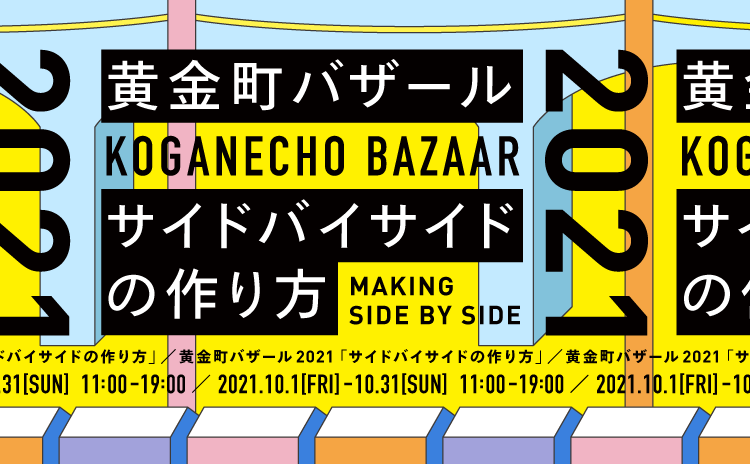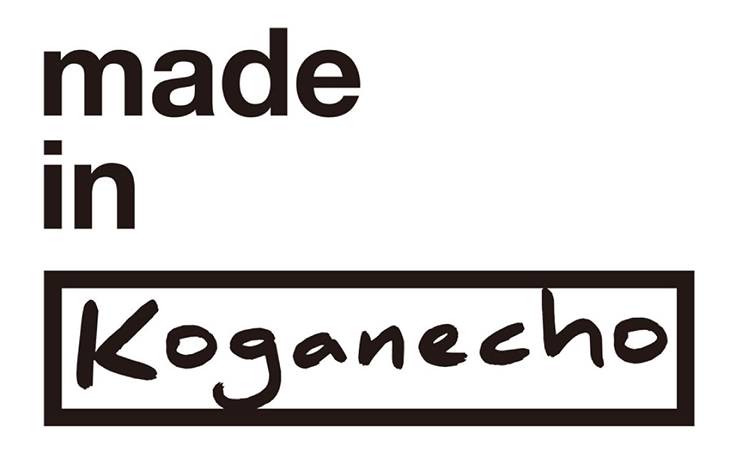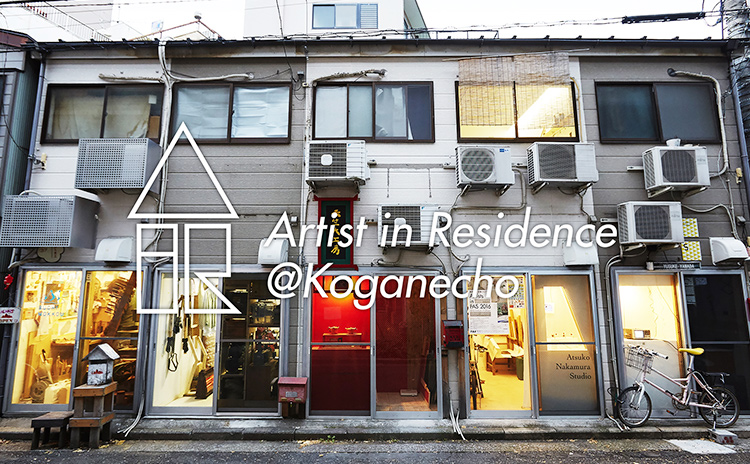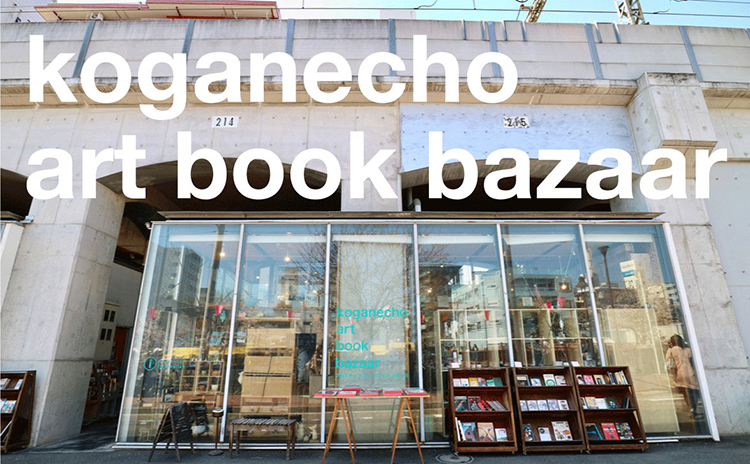Art and Community: A Practice in Koganecho, Yokohama
Introduction
Project Supervisor
Minori Sawaki
The activities of “Community Development through Art” in the Hatsuko-Hinode-cho district (Koganecho) of Yokohama City started in 2008 and have been going on as of 2021 for 12 years. Koganecho, with its complex historical background, has undergone visible changes as it has come to be recognized as an “Art Town” through the development of cultural activities in the city’s urban policy.
This book documents the practice and daily life of engaging art and the city, using the activities in Koganecho as a case study, along with the Creative City Policy of the City of Yokohama (2004-), which provided the background for the activities, together with the vision of the “Museum City Project” (1990-2006, Fukuoka), a pioneering urban art project in Japan. By looking at the events that took place in the small town of Koganecho from the perspective of both urban and cultural policy, we will reconsider the role and function of art in society.
Koganecho used to be a dense area of small buildings called “illegal special bars” where underground businesses, prostitution and drug trafficking were rampant. Addiction, HIV infections and other social problems, and the environment in the town deteriorated until the police shut it down in January 2005. Despite the fact that the area is adjacent to other neighbourhoods and an elementary school, it was no longer a safe place for women and children to walk alone, and more and more residents began to move out of the area.
Another important aspect of community development was the presence of artists. Shingo Yamano, the director of Koganecho Bazaar, was previously involved in the “Museum City Project” in the 1990s, an experimental attempt to build a system to distribute and promote art by intervening with art in a city in engaging with general public.
The “Koganecho Bazaar,” which has been held annually since 2008, began as an experiment in using art to revitalize the town in order to solve local issues, under the leadership of the local government. The artists are offered not only to exhibit their artworks, but also to work together with local residents and local businesses to create artworks while building a relationship between them. The artists are involved in the daily life of the community, in exploring a common language while respecting the different perspectives of others, and gradually and carefully building a relationship with the community.
The reason why art was chosen for this project lies in the “Creative City of Arts and Culture- Creative City Yokohama”, which was proposed by the City of Yokohama in 2004. It is a vision that seeks to leverage the creativity of culture and the arts to create new values and attractions for the city, and it is an urban policy that Yokohama was one of the first cities in Japan to put into practice. We hoped that cultural and artistic activities would lead to the revitalization of the area through the power of art.
The authors of this book, Shingo Yamano and Shinji Suzuki, have been involved in Koganecho activities from the very beginning. How did they see the city, each with a different field of expertise? What kind of vision of the future city and town did those who initiated the activities at that time have? Were they consistent with the current landscape?
The changes and relationships in the city that have occurred over time have gradually taken shape, creating gaps and overlaps in the daily relationships of people with different positions and backgrounds who gather in the city, as the city and art work to connect with each other.
The “community building activities through art” have steadily built a community that embraces diversity while incorporating art into the daily life of the community. Artists’ creativity not only creates works of art as expression, but also creates new values and relationships in the community and society, and is the driving force behind the formation of an affluent society.
As society continues to transform itself in response to the changing times, we hope that everyday life with art will serve as a catalyst for nurturing new relationships and rich communities.
Chapter 1: The Beginning of the Creative City
Urban Design and Cultural Policy
Nobuharu Suzuki
Since 2004, Yokohama has been developing the city with the goal of becoming a “Creative City for Culture and Arts- Creative City Yokohama”. It all started in January 2004, when the “Committee to Study the Revitalization of the City Center through the Promotion of Culture, Arts, and Tourism” (Chaired by Takeru Kitazawa (1953-2009), professor at the University of Tokyo), an advisory body to the mayor, issued a proposal for “the formation of Creative City Yokohama- Creative City for Culture and Arts.” The proposal stated that “the office vacancy rate in the Kannai area (meaning inside the customs house), the site of the port opening built in 1859, is in decline, with the vacancy rate reaching approximately 14%, and in order to revitalize this old city center, cultural and artistic activities and tourism should be promoted.
The Creative City Plan for Culture and the Arts, which was launched based on this proposal, set four goals and five strategic projects.
The four goals are:
(1) Realizing a creative environment where artists and creators want to live
(2) Economic revitalization through the concentration of creative industries (*1)
(3) Utilization of attractive local resources
(4) Realizing the Creative City of Culture and the Arts led by the citizens.
The strategic projects to realize this goal are:
(1) National Art Park (tentative name) Concept
(2) Formation of Creative Neighbourhood
(3) City of Visual Culture
(4) Yokohama Triennale
(5) Fostering the Leaders of Creativity

At first glance, the “National Art Park Project” (tentative name) appears to be a plan to create a national art park, but in fact, it is not. In the prewar period, land reclamation in the port area was a project under the direct control of the federal government, and the old port area of Yokohama, partly owned by the state, were underutilized. If the city wanted to convert such state-owned land to promote development, the federal government would require the city to purchase the land, but the city did not have the financial resources. Therefore, the city developed a strategy to utilize state-owned land as port green space with low financial burden and to create an environment where cultural and artistic activities can take place.
This is the reason why the Yokohama Triennale in 2005 was held at Yamashita Pier – with a future change of the land use in mind, and the ZOU-NO-HANA Terrace operated by the Wacoal Art Center is basically a free resting facility within the harbor green space. This concept covers the waterfront area of the city center from the Minatomirai district to Yamashita Pier and is an aerial strategy for a creative city. There are many other cities in Japan promoting creative city concept, but few of them have a clear spatial strategy. This is the unique point of Yokohama city’s Creative City planning.
At the time when this concept was developed, the Koganecho initiative discussed in this book had not yet begun, and the Kangai area outside of the customs house, the area reclaimed as Yoshida Shinden, south of the JR line and its surrounding area including Koganecho was not the part of the planning. The plan was adjusted later when the Koganecho project was launched.

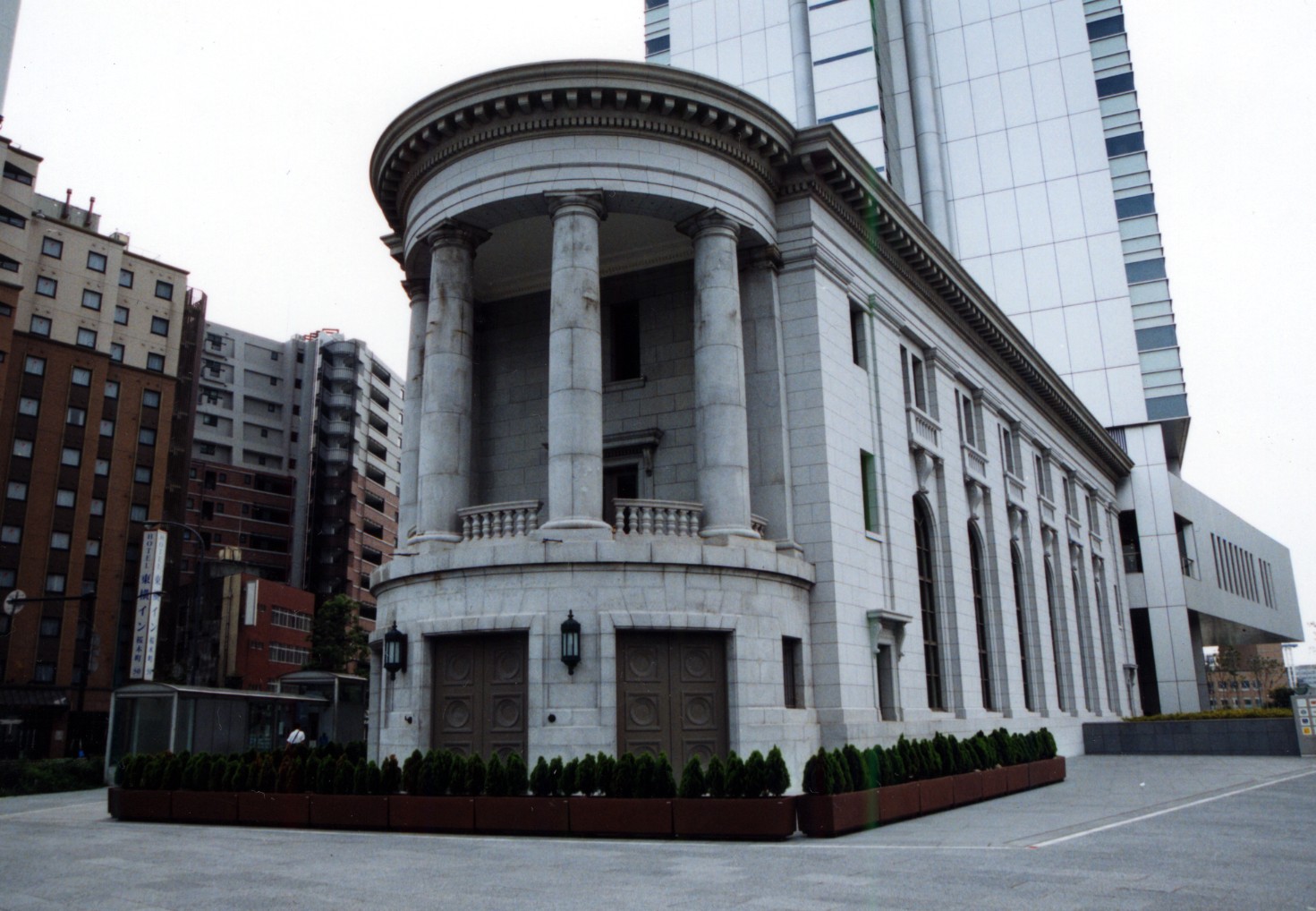
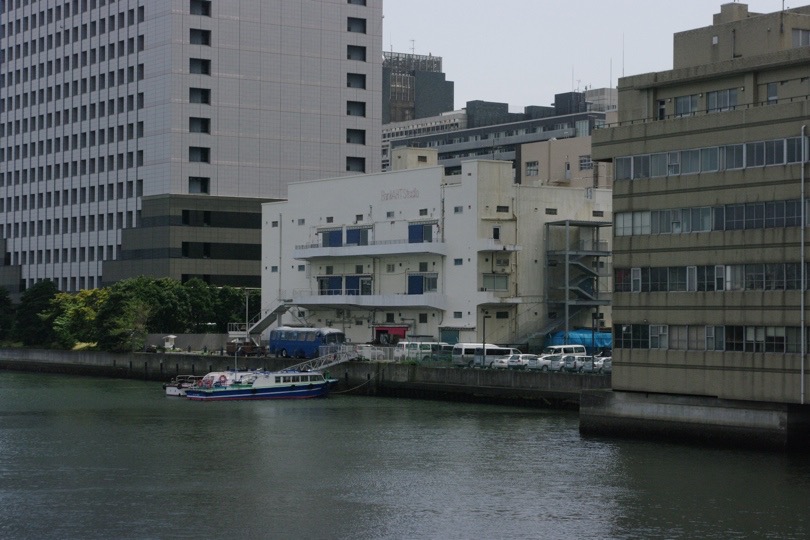
The second project, “Formation of the Creative Neighborhood” started as the core initiative of the current BankART project. The current NPO BankART1929 (Directed by Osamu Ikeda) was selected to manage the project by an open application process, to utilize the historical buildings in the Bashamichi district, the former Daiichi Bank and the former Fuji Bank (both completed in 1929), the purpose for the use of both had not been determined at the time. BankART 1929 is truly the flagship of the Creative City. Later, the former Fuji Bank was used for the graduate school of Tokyo National University of Arts and Music, and in 2005, the city leased the former NYK(Nippon Yusen Kaisha)warehouse for BankART to operate a new Creative City base. This was named BankART Studio NYK, and became not only a space for art events, but also a gathering spot for diverse group of people, school projects, and study groups to discuss visions for urban development. Also, the “Kitanaka BRICK & WHITE” project that took place from 2005 to 2006 is worth remembering.
This project was a temporary use of two buildings, prior to the start of redevelopment of the former Teishin Warehouse headquarters building and the former Teishin building. Ikeda approached Mori Building Co., Ltd., the developer at the time, and about 50 artists, creators, and architects set up their studios and offices there for a limited period of time. Some of them moved their offices from Tokyo, and many have continued to work in Yokohama after the project was completed. It could be said that BankART led by Mr. Ikeda, has been engaged in activities that truly embody the concept of Creative City.
In 2005, ZAIM opened in the former Kanto Finance Bureau building, initially as a base for supporters of the 2005 (Yokohama) Triennale, and later as shared offices for artists and creators.
In 2006, as part of the City of Yokohama’s Creative Neighborhood Formation Project, a public call was made for private organizations to manage and operate the former wedding hall on Nogeyama as a creative center for the performing arts. A joint venture between Art Network Japan (NPO) and ST Spot Yokohama (NPO) was selected to manage the building, which has since been operated as a base for performing arts groups called “Kyu Na Saka Studio” (currently operated by Art Platform, NPO).
In 2009, the Zou-no-hana area, the birthplace of the Port of Yokohama, was developed into a park as part of the 150th anniversary of the opening of the port. The Zou-no-hana Terrace, a resting facility within the park, is operated by the Wacoal Art Center, a company that operates the SPIRAL, a cultural complex in Aoyama and a number of art-producing business.
Thus, in the mid-2000s, new centers such as BankART, ZAIM, Kyu Na Saka Studio, and Zou-no-hana Terrace were opened one after another in Yokohama, and artists and creators began to develop various activities. The Koganecho project was launched against the backdrop of these experimental new approaches of the city.
I would like to address the historical background of the development of a series of Creative City policies.
In Yokohama, urban design planning has been undertaken since the 1970s. In the 70s, the development of a central promenade and the Yamashita Park Avenue area (the plaza in front of the former City Hall, now closed), pedestrian-friendly urban development such as the Bashamichi shopping street and Isezaki-Mall were taking place, and in the 1980s, the field of urban design activities expanded to include city planning that utilized historical buildings, and water and green city planning that has developed the river banks and the parks in suburban area. Especially in the late 1980’s, international conferences and events related to urban creativity were held, and the “Design City Manifest” by then Mayor Takahara Hidenobu was issued from Yokohama. The search for new developments in urban design was initiated by urban designers such as Takeru Kitazawa, who was working in the Yokohama City Urban Design Office at the time.
In 1987, the Urban Design Office conducted a study for organizing a Triennale. Although the idea of the Triennale was mainly design-oriented and not the kind of international contemporary art exhibition that is currently being held in Yokohama, the fact that such an urban experiment was being undertaken within the City Planning Bureau, which at the time was responsible for the development of urban infrastructures, was a major difference from other cities. The implementation of this survey would later lead to organizing the (Yokohama) Triennale.
Although Yokohama Triennale is currently organized by the city of Yokohama, the first Yokohama Triennale was organized by the Japan Foundation. Mr. Kitazawa told me that in the course of the search for a venue, Yokohama city was approached to host the event because the city had in the past conducted a survey of Triennials.
Given these circumstances, the first Yokohama Triennale was held in 2001, with Pacifico Yokohama and the Red Brick Warehouse as its main venues, prior to this, in 1997, the Planning Department of the City Planning Bureau conducted a “Study on the Promotion for the City of Culture and Arts” which examined the possibility of utilizing waterfront and open spaces in the city for the Triennale. In fact, the first Triennale was a city-wide festival, with artworks scattered along the waterfront and along the promenade. While these urban design approaches for the art and design took place, another movement in the city of Yokohama had led to the formation of the Creative City policy.
Around the 1970s, innovative local governments, including Yokohama city, began to introduce “cultural policy”, and the departments in charge of cultural policy were established in the departments of the prefectures and ordinance-designated cities nationwide. In Yokohama city, also, cultural activities were promoted, including the opening of the (Yokohama) Citizens’ Gallery in the former Naka ward office in Sakuragi-cho in 1964, and its relocation in 1974 with the opening of the Education and Culture Center. Located in front of Kannai station, Education and Culture Center was a well-situated cultural complex that included a civic gallery, hall, audio-visual library, and music practice rooms, used for training municipal school teachers, citizen lectures, and organizing exhibitions and other events. Yokohama city’s cultural programs began in earnest in the 1970s, and in the 1980s, an increasing number of small theaters and avant-garde artists were invited for theater performances and cultural events sponsored by Yokohama city. Some of these events took places in warehouses that were still scattered throughout the city center, in addition to the Education and Culture Center.
In terms of the city hall structure, the Cultural Affairs Division of the Board of Education used to be in charge of cultural activities, but in 1976, the Cultural Affairs Division of the Planning Bureau was established, and that department was in charge of cultural policy. In 1982, this cultural affairs section became the Cultural Affairs Office of the Citizens Bureau, and in 1991, it was transformed into the Citizens Culture Department, consisting of the Cultural Promotion Section and the Cultural Facilities Section. In 1995, the Cultural Affairs Department was absorbed from the Board of Education to unify cultural administration.
The concept of 2004 Creative City for Culture and the Arts was fulfilled under the leadership of the mayor at that time, Hiroshi Nakata, by combining and developing the urban design and cultural policy. Takeru Kitazawa, who chaired the committee that examined this concept, was an employee of the city of Yokohama from the 1980s to the 1990s, exploring new urban design, and became an assistant professor at the University of Tokyo in the late 1990s. Kitazawa had a good understanding of policy transitions and continuity within City Hall. (*2).
What are the characteristics of Yokohama’s Creative City for Culture and the Arts policy compared to other cities? The most distinctive feature is that the city of Yokohama has conceived of its initiatives as a policy package that mixes three fields – cultural policy, industrial policy, and urban design. In a typical public administrative structure, each of these areas is handled by an independent division. but the city of Yokohama aimed for a synergy by establishing a new cross-sectional organization called the Creative City Project Headquarters to commemorate the 150th Anniversary of the opening of the port. Naturally, officers from the Urban Design Office and the Cultural Promotion Division were appointed to this division. For a period of time, I worked two days a week in this division as a Creative City advisor, and I remember that there were many experienced staff members who had pioneered new fields in their respective specialities, and in a positive sense, did not seem like government officials, creating an atmosphere like that of a “Ryozanpaku” (a gathering place of ambitious men).
In the first half of the 2000s, the concept of the Creative City was gaining attention in Japan. Publications by Charles Landry, Richard Florida, and others were translated into Japanese, as well as publications on the subject of Creative City by Japanese authors such as Masayuki Sasaki. The city of Yokohama and Kanazawa were taking advanced approaches and gradually expanding their activities. Yokohama’s success attracted many visitors in research from Japan and abroad. The International Conference on Creative City was held in 2009, on the occasion of the 150th anniversary of the opening of the port. I was involved in this international conference as the head of the planning committee, along with many experts from Japan and abroad gathered to discuss the future of cities, with Sir Peter Hall, a well-known figure in the field of urban planning history, as the keynote speaker. In 2012, an international symposium was held in Yokohama on the occasion of the launch of the Creative City Network Japan (CCNJ). As of 2020, 116 municipalities are participating in CCNJ.
Afterwards, as it evolved, the Creative City policy gradually took on a different form. With the change of mayor, Fumiko Hayashi, and the introduction of Hayashi’s color into the city’s policies, a new development was promoted that differed from the original plan. Specifically, the Triennale was combined with music and dance events such as the “Oto Matsuri (Sound Festival)” and “Dance Dance Dance” being held every third year, is a significant change.
There have also been major changes in the Creative Neighbourhood planning. As for ZAIM, after the seismic retrofitting of the building had made, a new operator was recruited by open call, and the building became a now a pilot site for the Yokohama Sports Town concept proposed by the Yokohama DeNA Bay Stars. The second-floor houses group of incubation offices with sports and creative themes and the building has become more of a business entrepreneurial center than a contemporary art center. Also, BankART NYK, once used as a venue for the Triennale and well known internationally, was regrettably demolished in 2018 due to the owner’s wish. The NPO BankART 1929 has continued to operate the base in the following years: BankArt Home (Kannai Sakura-dori, opened in 2019, closed in 2020) and BankART Station (in Minatomirai Line Shin-Takashima Station, opened in 2017), and in 2018, BankArt KAIKO (Kaiko means Silkworm, and its’ called for the location inside the restored former Imperial Silkworm Warehouse), was opened.
Initially, the establishment of the “Asia Design Management Center” (tentative name) was a condition of the redevelopment of the Kitanaka-Kita district as a contribution to the community when the land use was reviewed (e.g., the floor-area ratio was revised). Although the developer had changed but the concept of cultural contribution remained, and a live house and other facilities has opened, the return of BankART to the site of the Kitanaka BRICK &WHITE in 2005, which was a time-limited project until the redevelopment, was a very symbolic event.
The series of projects in Koganecho did not happen on their own, but were driven by the idea of the Creative City for Culture and the Arts, a movement to attract artists and creators to the city center at the same time, with the aim to revitalize the city center by coordinating with these projects. However, among the many such projects, the challenge of Koganecho project had a different character from the others. The major differences were that the project was developed in a district that had been experiencing the social problem of prostitution, that it had to deal with the issues of public safety and small stores used for prostitution, and above all, that it was a project that proceeded while maintaining a close relationship with the local community.
Therefore, while other projects were led by the Culture and Tourism Bureau, which has jurisdiction over Creative City policies, this project was carried out through the connections among many stakeholders, including other departments (the Urban Development Bureau and the Naka ward office), the police, local councils, neighborhood associations, and local residents. In publishing this book, it is the authors’ intention to mention, as much as possible, points that have not been discussed in the past, but we must admit that some issues are difficult to describe here. For those who have come to see exhibitions such as the “Koganecho Bazaar,” some aspects may be difficult to understand. However, the community moves forward in spite of the complexities of the situation.
In terms of the relationship between art and community, the practice in Koganecho has been greatly influenced by the trend of contemporary art in Japan that began in the 1980’s. This is largely due to the appointment of curator Shingo Yamano. The Museum City Project in Fukuoka, which Yamano undertook, was a pioneering art project that developed into an urban space, and the essence of the project, created through exchanges with numerous contemporary artists such as Tadashi Kawamata, Cai Guo Qiang, and many others, has been linked across time and space from Fukuoka to Yokohama and then to Koganecho.
(*1) Creative industries are those related to products with intellectual property rights, such as design, art, software development, and computer services.
(*2) For the development of cultural policy in Yokohama City, see Strategy for Creative City Yokohama: Challenge to Creative City by Kunihiro Noda (2008).

